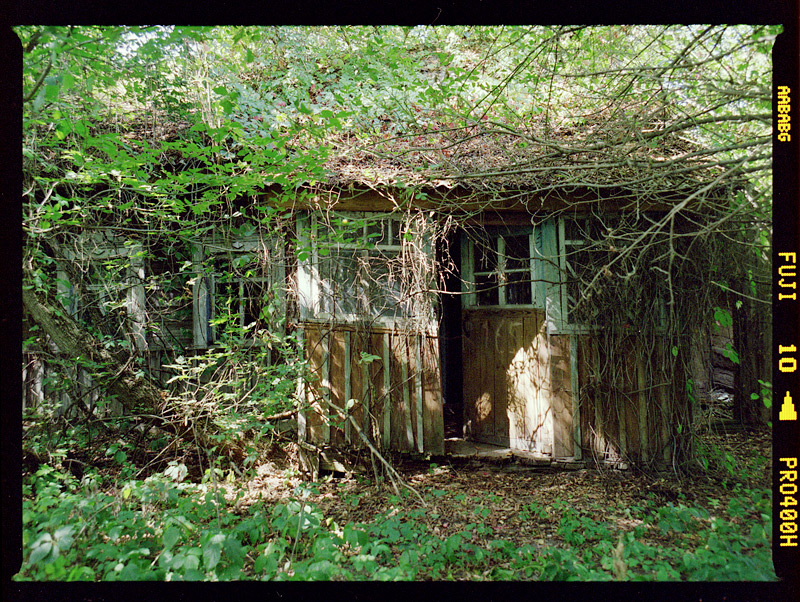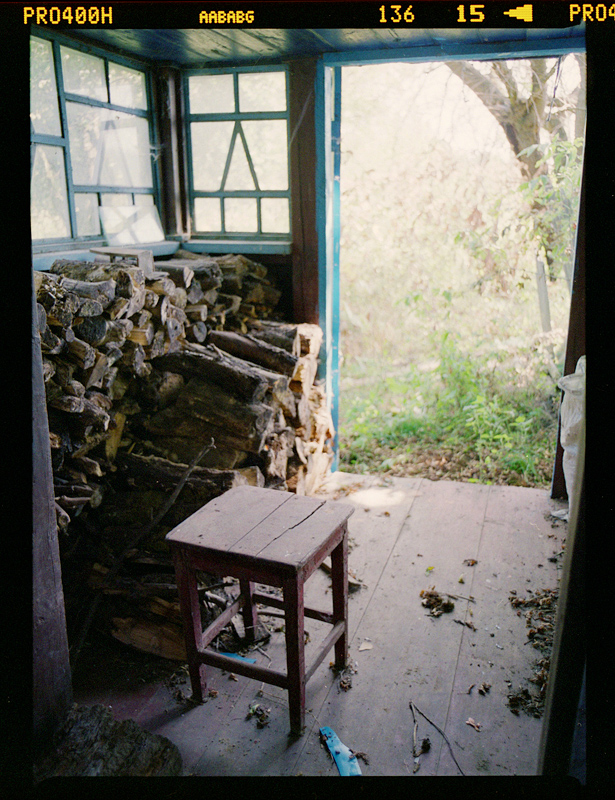August 2010.
Narodichi district, Ukraine. 80km West of the the city of Chernobyl.
On a touristic day trip to the Chernobyl reactor and the abandoned town of Pripjat in 2008, I had heared about people who still live in the former outer exclusion zone.
During my following research I stumble upon a very interesting internet blog and immediately get in contact via email with Elena who runs the blog and is a well known blogger and political activist, in my opinion.
She knows the area very well from many trips with her motorbike. She lives near Kiev and, as a rare exception, as she tells me later, invites me to her home and on to a journey to the forgotten people of the zone.


Right after the Chernobyl disaster new settlements were started to be built to provide new homes to the evacuees, but a few were soon discontinued when it was noticed that radiation levels were not at an acceptable level.


Among abandoned villages and ghost towns are single farms that are still inhabited.
These people refused to evacuate or came back after month or years, after radiation levels had dropped to a point where it’s not dangerous anymore to eat homegrown vegetables, fruits and meat, they say.
Most evacuees were moved to some of the Plattenbau districts in the outskirts of Kiev. So these people who were brave enough to return, also chose to live with the risks of radiation and the fate of isolation in trade with being able to stay where they had probably grown up and were happy to spend their lifetime.

It feels strange to sit in the car and look on the outside. There are mostly fields or forests to be seen, occasionally interrupted by a yellow triangular sign that reminds me that we are travelling on radioactive streets.
We brought a Geiger counter, just in case. It shows mostly normal radiation levels, not dangerous at all to humans.
Then sometimes it starts beeping wildly and unexpectedly, showing levels that are sometimes 100 to 1000-fold of the normal levels. It stops beeping a few hundret meters further, as quick as it started. What happend here? Why are there spots of radiation and areas that don’t seem contaminated at all?

We bring food and other supplies because these people nowadays have to travel for hours to find the next grocery store. For years they were supported by food deliveries brought to them by the military that was patrolling the area around their home. They basically lived there illegaly. Now they are on their own.



A last stop remains. We are searching for a woman, Elena had visited many times before on her previous journeys through the zone. Her house lies on the edge of an otherwise abandoned village. It looks rather abandoned when we arrive, but most of these farm houses do, more or less. As we come closer, we notice that the door is locked with a piece of wood. On the back of the house, on the window sill, lies a perfectly shaped bread, covered with a kitchen clothe, like it was put there to cool down after it was taken from the oven. The bread has a bit of fungus on the top. The house IS abandoned after all.
We later meet another local in the neighboring village who tells us that the old lady had perished at the age of 94 just a few weeks prior to our visit. She was the last remaining inhabitant of the village.

…
…
80km West (Part 2)
Thanks to Elena and her husband for their guidance, to Gus for his company and especially to all the people of the “zone” who let us on their properties and shared their experiences.